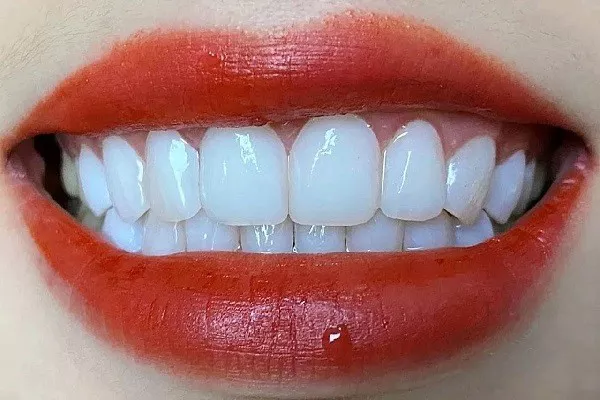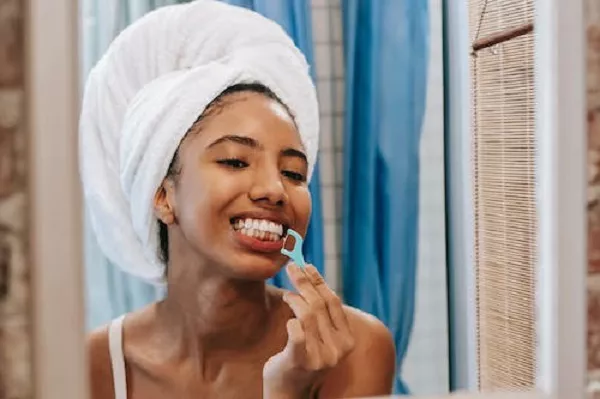Whitening strips have become a popular method of teeth whitening, offering a convenient and cost-effective solution for those looking to brighten their smile. However, it’s important to use them safely and effectively to avoid damaging your teeth or gums.
In this article, we’ll explore how many times you can use whitening strips and provide some tips for safe and effective use.
Understanding Whitening Strips
Before discussing frequency of use, let’s first understand what whitening strips are and how they work.
-
What are whitening strips?
Whitening strips are thin, flexible plastic strips coated with a bleaching gel that contains hydrogen peroxide or carbamide peroxide. These chemicals break down stains on the surface of the teeth, helping to remove discoloration and improve overall whiteness.
-
How do whitening strips work?
When applied to the teeth, the gel on the strips reacts with the moisture in your mouth, releasing oxygen ions that penetrate the enamel and bleach the underlying dentin. This process typically takes about 20-30 minutes per application.
-
Are whitening strips safe?
When used as directed, whitening strips are generally safe and effective. However, they can cause tooth sensitivity or gum irritation, especially if used too frequently or for too long.
How Often Can You Use Whitening Strips?
Now that we know a bit more about whitening strips, let’s discuss how often they should be used.
-
Follow the instructions
The most important thing to remember when using whitening strips is to follow the instructions carefully. Each product may have slightly different guidelines, so be sure to read the packaging and any included information thoroughly before use.
-
Stick to recommended frequency
Most whitening strip products recommend using them once a day for a set period, usually around two weeks. Some products may also recommend using them twice a day, but this is less common and should be done only under the guidance of a dentist.
-
Don’t use them too often
While it may be tempting to use whitening strips more frequently than recommended in an effort to achieve faster results, doing so can actually harm your teeth and gums. Overuse of whitening strips can cause tooth sensitivity, gum irritation, and even damage to the enamel of your teeth.
Tips for Safe and Effective Use
To ensure safe and effective use of whitening strips, here are some additional tips to keep in mind.
-
Start with shorter sessions
If you’ve never used whitening strips before, start with shorter sessions of around 10-15 minutes and gradually work your way up to the recommended time. This can help minimize tooth sensitivity and gum irritation.
-
Avoid eating or drinking immediately after use
After using whitening strips, it’s best to avoid eating or drinking anything that could stain your teeth for at least 30 minutes. This includes coffee, tea, red wine, and other dark-colored beverages.
-
Use a sensitivity toothpaste
If you experience tooth sensitivity while using whitening strips, try using a toothpaste designed for sensitive teeth. These products can help reduce discomfort and protect your teeth from further damage.
Potential Risks of Overusing Whitening Strips
While discussing overuse in the previous points, it’s worth exploring the potential risks associated with using whitening strips too frequently or for too long.
-
Increased tooth sensitivity
As mentioned earlier, overuse of whitening strips can cause tooth sensitivity, which may manifest as discomfort or pain when eating or drinking hot or cold foods and beverages.
-
Irritation of gums or other soft tissues
Whitening strips contain chemicals that can irritate the gums or other soft tissues in the mouth, leading to discomfort, redness, or even bleeding.
-
Weakening of enamel
Overuse of whitening strips can also weaken the enamel on your teeth, making them more susceptible to damage from acid erosion or tooth decay.
Choosing the Right Whitening Product
Not all whitening products are created equal, and some may be better suited to your needs than others. Here are a few things to consider when choosing a whitening product:
-
Concentration of active ingredient
Different whitening products have different concentrations of hydrogen peroxide or carbamide peroxide, which can affect how quickly and effectively they whiten teeth. Higher concentrations may produce faster results but also increase the risk of side effects.
-
Ease of use
Some whitening products, such as whitening pens or LED lights, may be more convenient or comfortable to use than traditional strips. Consider your preferences and lifestyle when choosing a product.
-
Cost
Whitening products vary widely in price, so it’s important to consider your budget when selecting a product. However, keep in mind that cheaper products may not be as effective or safe as pricier options.
Alternatives to Whitening Strips
If you’re hesitant to use whitening strips or simply prefer a different method, there are several other options for achieving a brighter, whiter smile. These include:
-
Professional teeth whitening
If you’re looking for the fastest and most effective way to whiten your teeth, professional teeth whitening at a dentist’s office may be the best choice. This involves applying a stronger bleaching agent to your teeth under controlled conditions.
-
Whitening toothpaste or mouthwash
Whitening toothpaste or mouthwash can help remove surface stains from your teeth over time. While they may not produce dramatic results like whitening strips or professional treatments, they can be a good option for maintaining a bright, healthy smile.
-
Natural remedies
Some people prefer to use natural remedies such as baking soda or activated charcoal to whiten their teeth. While these methods may have some effectiveness, they have not been extensively studied and it’s important to discuss them with your dentist before trying them out.
In conclusion, using whitening strips can be an effective way to achieve a brighter, more confident smile. However, it’s important to use them safely and effectively to avoid damaging your teeth or gums. Stick to the recommended frequency and consider factors like concentration, ease of use, and cost when choosing a product. If you’re hesitant to use whitening strips, there are several alternative methods that may work better for you.
Recommended reading:
































